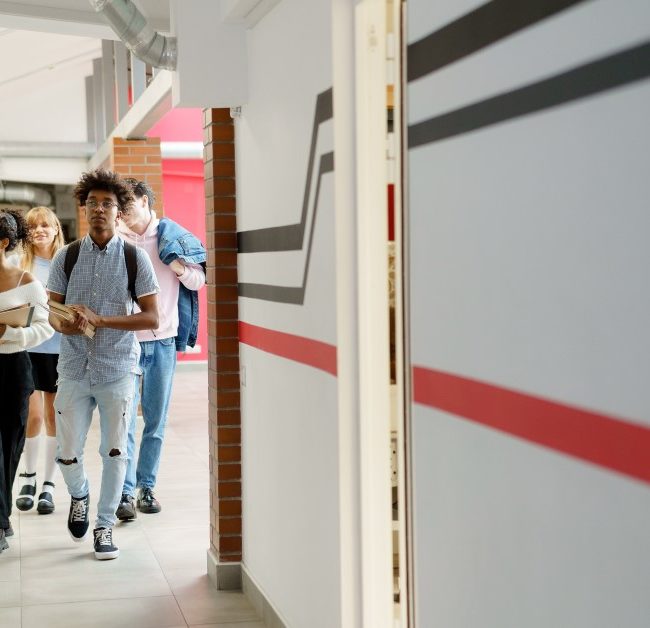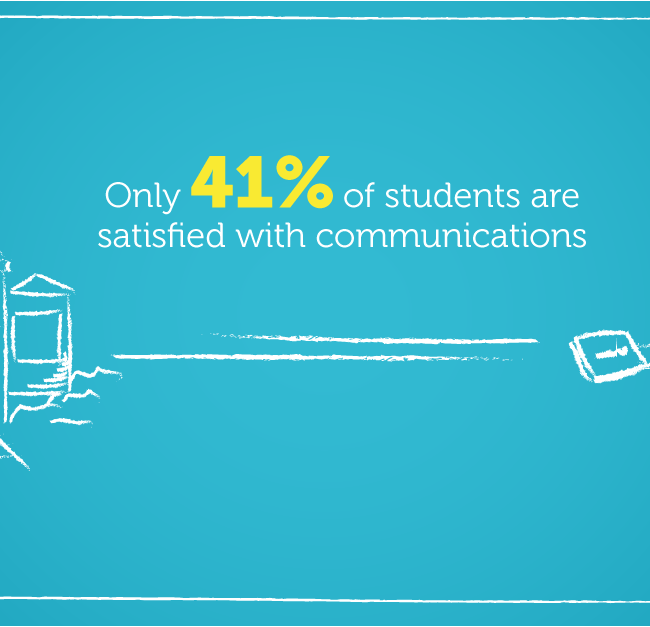
The Key to an Effective Contact Strategy – part 2

In this blog series, we will explore how educational institutions can create an effective contact strategy. In our previous blog, we focussed on the information you need to communicate with your students. This second blog is about the second component of your contact strategy: how to transfer the information.
In a classroom, it is rather easy to transfer information to your students. Teachers do it every day by giving lectures, showing slideshow presentations and telling students what they need to know. However, sharing information outside classrooms is a bit more difficult. Many educational institutions struggle to provide all the right information, mainly because they have trouble reaching students. Technology is driving educational institutions and their students apart.
Traditionally, educational institutions tend to communicate with their students via various channels and systems. When students are enrolled, they get a student number. With that number and the associated email address, students are informed. Via email, they receive more important updates, while they will have to log into different systems to access their timetables, results and more. In some universities, timetables are still printed out on paper and simply put up on a board on campus.
A Digital Gap
The younger generation is often the early adopter of new technology. Unsurprisingly so, research shows that between 98% and 100% of all students own a smartphone. Laptops are also popular, with 90% to 95% of students in possession of them. Both devices are crucial for students. Laptops are primarily used to work on papers, prepare presentations and study for exams. Smartphones, on the other hand, are the preferred device when it comes to checking general information like timetables and study results.
Technological opportunities allow us to create smartphone apps, to centralize information, to make information more accessible; but educational institutions often do not. And it is understandable. In the current situation, staff know where to put information and IT knows how to keep existing systems up and running. Creating a new application, either a whether it be smartphone app or another system is a costly endeavour for educational institutions.
Overcoming the Digital Gap with Students

Though it is a costly endeavour, it is the easiest way to make sure your students are informed and able to focus on graduating. Luckily, there are many solutions available for educational institutions. One option is to develop an application in-house. You are able to develop everything you want, as long as you are willing to invest.
A more efficient option is to find a partner that offers an existing solution. Though the StuCommApp is one of them, there is a wide variety of options available for educational institutions. The biggest advantage of finding a partner over developing an application yourself is that it is a cost-effective, proven solution.
What is most important is to validate with your students what their ideal solution would be. The needs and wants of students change every day. Today they want to receive information through a smartphone app, tomorrow they will want to receive information a different way. Knowing what your students want enables you to fulfil their needs. Whichever way you chose to communicate with your students, make sure it suits them.
In our next blog, we’ll discuss the third part of your contact strategy: what if there was a two-way stream of information? Believe us, there is.







